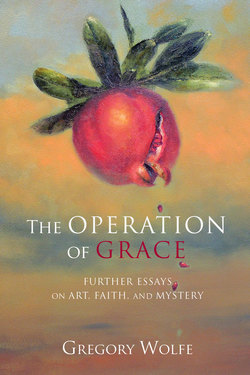Читать книгу The Operation of Grace - Gregory Wolfe - Страница 13
На сайте Литреса книга снята с продажи.
Strange Pilgrims
ОглавлениеIn his masterful book The Life You Save May Be Your Own, Paul Elie has crafted a braided narrative about the lives and works of four twentieth-century American Catholic writers, all now canonical figures: Dorothy Day, Thomas Merton, Flannery O’Connor, and Walker Percy. The first sentence begins casually but ends with a kick: “In the photographs, they don’t look like people who might make you want to change your life.”
For those who know anything about this quartet, this statement is puzzling. In their youth, all four had read—and felt liberated by—the French neo-Thomist Jacques Maritain’s Art and Scholasticism. In that short book—more a primer than an extended study—Maritain argued convincingly, and from a deeply Christian point of view, against the notion that art should be created for the purpose of moral edification. Following Saint Thomas, Maritain said that the end of art is the good of the made thing, the perfection of the form. In their unique ways, Day, Percy, Merton, and O’Connor followed suit, writing edgy, disturbing works that offended the pious within their own religious communion.
O’Connor gave us proud, grotesque characters (rather like herself) who seek to control the world around them, only to meet violent crises that offer them a redemptive choice. Percy’s lonely melancholics seek to anesthetize themselves but are forced to set off on an existential search, dodging grace for a time but ultimately sidling up to it. Merton gives us himself, the zealous convert and reinventor of monasticism, slowly discovering that he is mouthing pieties; in order to restore life to his own tradition, he cross-fertilizes it with Eastern spirituality and political engagement. Day, too, tells her own story, that of a Bohemian intellectual whose ideas about helping the poor gain traction only when secular humanitarianism is replaced by divine charity.
Elie has grasped a paradoxical truth about the “School of the Holy Ghost,” as one wag dubbed the group. They have caused many readers to want to change their lives: to convert to Christianity and/or Catholicism; to become politically active; to study and practice ancient forms of Eastern and Western spirituality.
Elie makes no attempt to solve the paradox, but his richly detailed narrative sheds a great deal of light on the ways these writers balanced art and morality, orthodoxy and openness, the skeptical subjectivism of modern man with the objective claims of church and dogma. Elie contends that what all four had in common was a vision of human life as pilgrimage. He writes: “A pilgrimage is a journey undertaken in the light of a story. A great event has happened; the pilgrim hears the reports and goes in search of the evidence, aspiring to be an eyewitness. The pilgrim seeks not only to confirm the experience of others firsthand but to be changed by the experience.”
Percy, with his concern for the way language can become cheapened and emptied of meaning through overuse and trivialization, preferred the word wayfarer to pilgrim. His own understanding was informed by Søren Kierkegaard’s distinction between the genius and the apostle. The modern Romantic figure of the genius gave us a heroic figure who was capable of sudden epiphanies, personal revelations. But the apostle is someone who has “heard the news of something that has happened, and he has the authority to tell somebody who hasn’t heard the news what the news is.”
The writers covered in Elie’s book defined themselves to a great extent as apostles to a secularized culture that had either lost or rejected the news. What made them so effective was that their art dramatized a search—a pilgrimage—in which distant rumors are verified through hard-won personal experience. This also set them apart from so many overtly religious folk who seem to feel that no pilgrimage is necessary, since they have already attained the promised land. The School of the Holy Ghost was orthodox but never tame or complacent.
In the fifteen years since Image was founded, the more monolithic, militant secularism that dominated the last century has given way to greater openness to religious experience as a path toward truth. A host of gifted writers and artists have traced journeys similar to those undertaken by Elie’s quartet.
But here’s another paradox: as religion and spirituality have become more popular, so have the number of those who seem to prefer the model of genius to that of apostle. Under the influence of postmodernism and the therapeutic mentality, these artists seem less interested in listening for news than in making it. To paraphrase Luigi Giussani, the founder of the lay Catholic movement known as Communion and Liberation, the new religious geniuses confuse the religious sense that is planted so deeply in our hearts with faith itself. People like this are fond of saying that the search is more important than any possible goal.
There is a kernel of truth here, but there is also a critical difference. The pilgrim has heard a specific piece of news; she lives her life guided by the memory of an event. But her path also leads her toward a specific end. The pilgrim may spend her life on the road, striving toward a goal that is never fully reached in this life, but she sees it ahead of her. And while the pilgrim’s personal experience is central, a pilgrimage is never undertaken in solitude. Pilgrims travel in groups; their shared memory and end form a bond of friendship that tests and unfolds the meaning of the journey. One false alternative to pilgrimage is the arrogant belief that one has arrived. But the other is wandering alone.
